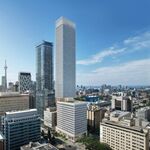CafeTO and changes to said program are on the agenda for the next Executive Ctte meeting.
There are some modest improvements proposed in terms of timing, (getting decisions made quicker and fast tracking previous permit holders) ; and starting the season earlier (May 1st, instead of May 15). Also better is the deployment of extra staff and coordination with BIAs in particular to help resolve issues in real-time as installations are done.
However, the program remains over bureaucratized.
And under the 'stupid' file......... they propose to ratchet up the fees substantially this year and next.
Report here:
Proposed Fee Structure:
View attachment 523383
So, here, I feel the need to give people some guidance on what the above looks like.
The rule in restaurant dining is roughly 20ft2 per seat (that includes table and walking space to get to/from same for customers and servers)
1m2 is 10.7ft2; so for simplicity's sake, 2m2 is one seat. Typical tables are 4m-8m2 (2 seats, 4 seats)
So if you're a small operator, and you want to put out 4 tables, of 4 seats each.....
You're being asked for roughly an extra $3,500 per year.
That has to be offset by profit, not revenue.
So profit of roughly $220 (additional) per seat.
Typical margin for a full-service restaurant is 4%
So multiply the above by 25 and you get a need for additional gross revenue of $5,500 per seat.
***
Sigh....that'll help drive interest in the program....





